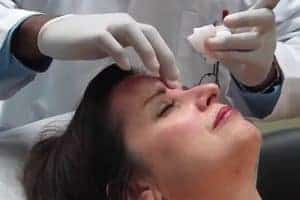
Off-Label Botox Procedures. The widespread, off-label use of Botox to treat everything from headaches to oily skin has many patient advocates worried. According to The New York Times, they are concerned that many off-label Botox procedures could hold hidden risks, as such therapies have not undergone extensive study. Botox and Botox Cosmetic, both manufactured […]

Off-Label Botox Procedures. The widespread, off-label use of Botox to treat everything from headaches to oily skin has many patient advocates worried. According to The New York Times, they are concerned that many off-label Botox procedures could hold hidden risks, as such therapies have not undergone extensive study.
Botox and Botox Cosmetic, both manufactured by Allergan, are purified forms of botulinum toxin, a nerve poison produced by the bacteria. Botox Cosmetic is approved for treating moderate to severe facial frown lines. Botox is medically approved for treating blepharospasm (involuntary blinking of the eye), cervical dystonia (involuntary contractions of the neck muscles), hyperhidrosis (excess sweating), and strabismus (crossed eyes).
According to The New York Times, many doctors believe that Botox is an effective therapy for other ailments. Physicians have used it to treat chewing problems, swallowing problems, pelvic muscle spasms, drooling, hair loss, anal fissures and pain from missing limbs, the Times said.
Such use is known as “off-label”, and is entirely legal. Once a drug is approved by the Food & Drug Administration (FDA), physicians are free to use it any way they see fit. The Times report said as much as half of all Botox procedures are off-label.
But Botox is not without risks. Last February, the FDA launched a safety review of botulinum toxin injections, including Botox and Botox Cosmetic. The FDA said at the time that it had received reports of adverse reactions in patients receiving the injections.
The most serious cases had outcomes that included hospitalization and death, and occurred mostly in children treated for cerebral palsy-associated limb spasticity. Use of botulinum toxins for treatment of limb spasticity (severe arm and leg muscle spasms) in children or adults is not an approved use in the U.S. The FDA said that the adverse reactions may have been due to overdosing.
The consumer advocacy group, Public Citizen has petitioned the FDA to issue warnings to doctors about the hospitalizations and deaths associated with the use of botulinum toxin products. The group wants a “black box” added to product labels and an information pamphlet given to patients when the drug is injected.
Sidney Wolfe, director of Public Citizen, told The New York Times, that the safety of off-label Botox procedures have not been established. Such therapies amount to “trial and error with a nerve poison”, Wolfe said.
According to the Times, when complications have occurred during off-label Botox procedures, they are often the result of overdosing. Because off-label treatments haven’t been subjected to clinical trials, physicians often make an educated guess about dosing. But too much Botox can be toxic.
Obviously, Allergan sees other uses for Botox. With annual sales of $1.3 billion, Botox and Botox cosmetic have been big revenue generators for the company. According to The New York Times, Allergan has applied for patents on more than 90 uses for the drug.
This year, it will ask the FDA to approve Botox as a treatment for stroke victims suffering from limb tightness or spasms. It is also expected to soon seek approval to market it as a treatment for migraine headaches and enlarged prostate.
If such uses are approved, Botox could become an even bigger blockbuster for Allergan. According to the Times, sales of Botox could easily double within the next five to seven years.
The personal injury attorneys at Parker Waichman LLP offer free, no-obligation case evaluations. For more information, fill out our online contact form or call 1-800-YOURLAWYER (1-800-968-7529).


